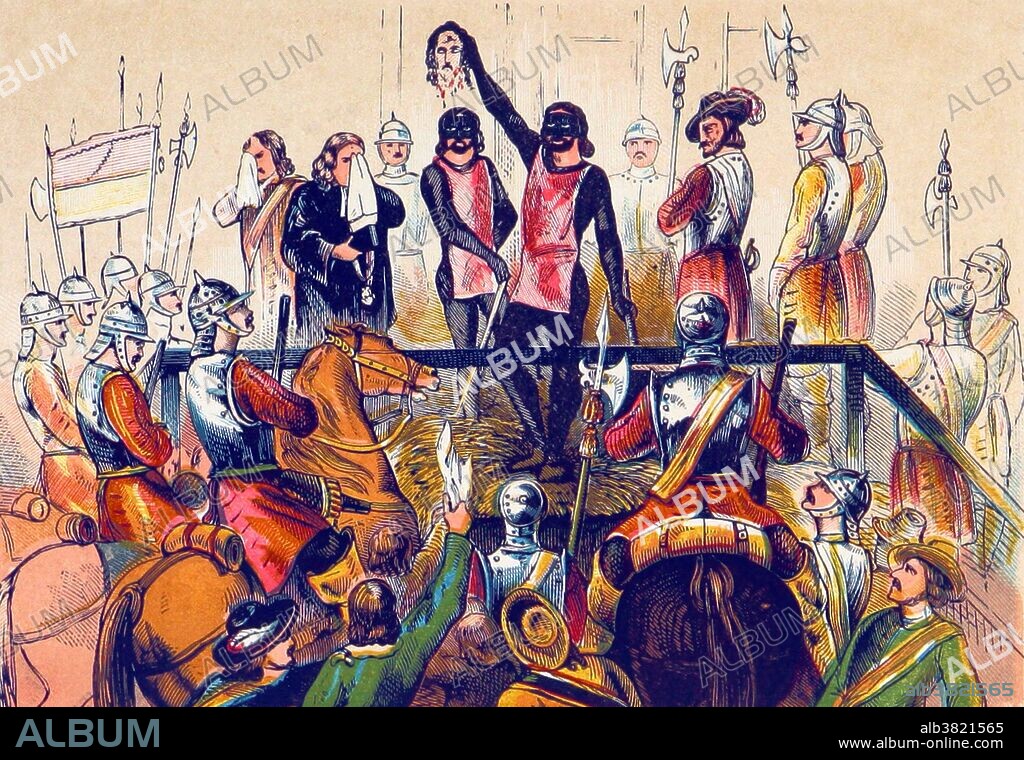alb3821565
Execution of King Charles I, 1649

|
Add to another lightbox |
|
Add to another lightbox |



Title:
Execution of King Charles I, 1649
Caption:
Charles I (November 19, 1600 - January 30, 1649) was monarch of the three kingdoms of England, Scotland, and Ireland from March 27, 1625 until his execution in 1649. Charles was the second son of King James VI of Scotland, but after his father inherited the English throne in 1603, he moved to England, where he spent much of the rest of his life. After his succession, Charles quarreled with the Parliament of England, which sought to curb his royal prerogative. He believed in the divine right of kings and thought he could govern according to his own conscience. His religious policies, coupled with his marriage to a Roman Catholic, generated the antipathy and mistrust of reformed groups such as the Puritans and Calvinists, who thought his views too Catholic. From 1642, Charles fought the armies of the English and Scottish parliaments in the English Civil War. After his defeat in 1645, he surrendered to a Scottish force that eventually handed him over to the English Parliament. He was tried, convicted, and executed for high treason in January 1649 at the age of 48. Image taken from page 115 of "A History of England for the Young" by Henry Tyrrell, 1872.
Personalities:
Credit:
Album / Science Source / British Library
Releases:
Model: No - Property: No
Rights questions?
Rights questions?
Image size:
3900 x 2692 px | 30.0 MB
Print size:
33.0 x 22.8 cm | 13.0 x 9.0 in (300 dpi)
Keywords:
1649 • 17TH CENTURY • ART • ARTWORK • BEHEADED • BRITAIN • CELEBRITIES • CELEBRITY • CHARLES I OF ENGLAND • CHARLES I • CHARLES THE FIRST • CONVICTED • DECAPITATED • DRAWING • ENGLAND • ENGLISH CIVIL WAR • EUROPEA • EUROPEAN • EUROPEANS • EVENT • EVENTS • EXECUTED • EXECUTION • FAMOUS PEOPLE • FAMOUS • FIGURE • HEAD CUT OFF • HISTORIC • HISTORICAL • HISTORY • ILLUSTRATION • ILLUSTRATIONS • IMPORTANT • JANUARY 30 • JANUARY 30TH • KING • MALE • MAN • MEN • MONARCH • MONARCHY • NOTABLE • PEOPLE • PERSON • PERSONALITIES • PERSONALITY • ROYAL • ROYALTY • RULER • TORMENTER • TRIED • WELL-KNOWN
 Pinterest
Pinterest Twitter
Twitter Facebook
Facebook Copy link
Copy link Email
Email

